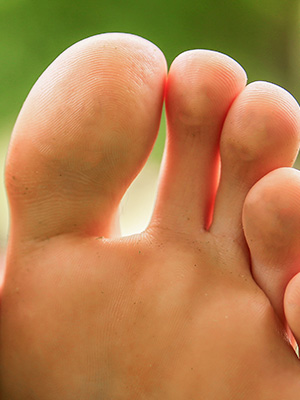 Big toe injuries can be more problematic than you think. Don’t underestimate an injured or broken toe.
Big toe injuries can be more problematic than you think. Don’t underestimate an injured or broken toe.
Big toe, great toe, or the medical term “hallux”-whatever you call that first toe of yours, it’s an important digit you don’t want to injure, because it could turn out to be a bigger problem than you think.
One such injury is “turf toe”, something that happens in football or other sports when the toe is forcefully bent in the wrong way. Other types of big toe injuries occur during everyday activities, such as dropping a heavy object on the foot or even badly stubbing your toe.
Turf toe varies in severity, ranging from a mild sprain to broken bones and a complete disruption of the ligaments around the big toe joint. More commonplace big toe injuries-such as stubbing your toe or dropping something on the toe-also vary in severity and may involve broken bones, a ligament sprain, and a crushed or torn-off toenail. If the toe was injured by something sharp such as a lawnmower or weeding tool, the damage could include deep cuts or worse.
The logical reaction to most big toe injuries is to think that it’s just a mild sprain, and to simply rest and let it recover. That’s fine, if the injury really is mild. But if the symptoms continue for more than two or three days,it may be more serious and it needs to be evaluated.
Timely evaluation is critical because waiting too long closes the “window of opportunity” for effective treatment and full recovery. This is especially true if the sesmoid bones-two very small bones in the area of the big toe-are broken or dislocated. If a broken bone is neglected, it could become a fracture that won’t heal and could create problems down the road.
The quicker the treatment is started, the better the result will be during treatment. That’s why we don’t want patients waiting too long to have their foot evaluated. Evaluation often includes taking x-rays, and sometimes an MRI, to determine the extent of the injury. Part of the evaluation process is also detecting whether potential problems could develop in the future.
Treatment for a fractured sesmoid bone may seem out of proportion to its tiny size. It might include a prolonged period of wearing a cast and not bearing weight on the foot. In addition, the surgeon may use an ultrasound or electric bone stimulator to treat the injury. In some cases, surgery is performed to remove one or both of the fractured fragments.
Some factors can make a person more prone to big toe injuries, such as participating in football, soccer, basketball, baseball, dance, gymnastics, and other sports. In addition, people who have had previous injuries to the big toe or have arthritis around the big toe joint might be at higher risk.
Whatever the cause leading to a big toe injury, We advise patients to be diligent about seeking treatment with a foot and ankle surgeon so you won’t lose that important window of opportunity. For more information on big toe injuries or to schedule a foot and ankle consultation, contact Alaska Foot & Ankle Specialists today.
This article is courtesy of American College of Foot and Ankle Surgeons’ Web site, FootHealthFacts.org.

